Comments / Questions (224)
![]() Paola Trentin wrote:
Paola Trentin wrote:
Buonasera, sto eseguendo la taglia S. Tutto bene sino allo sprone,ma una volta separate le maglie e aumentato 4 maglie ed iniziando con una maglia dir. e poi lo schema A5 mi sballa tutto il lavoro.
07.10.2019 - 19:18DROPS Design answered:
Buongiorno Paola. Verifichi di aver posizionato correttamente i segnapunti. Per la taglia S, lavora 1 m diritto, diagramma A.4 sulle 7 m successive e poi il diagramma A.5. Buon lavoro!
08.10.2019 - 08:21
![]() Tiril wrote:
Tiril wrote:
Hei, har kommet til bærestykket og skal sette maskene til ermet på en tråd, men det stemmer ikke at det er 41 masker å sett på en tråd. Får kun 39, da den neste omgangen vil øke maskene til 41?
02.10.2019 - 00:06DROPS Design answered:
Hej Tiril, jo hvis du har 192m så er de 55 m på for og bagstykke = 110, så har du 82 masker tilbage = 41 på hvert ærme. God fornøjelse!
02.10.2019 - 11:05
![]() Isabeille wrote:
Isabeille wrote:
Superbe modèle ! Fière d'avoir réalisé mon premier top down merci ! Je le referai dans une autre couleur mais en ajoutant 2 mailles sous chaque bras pour avoir un motif en continu car en taille L je trouve dommage d'avoir une si grande surface en jersey sur les côtés
09.09.2019 - 11:40
![]() Sylviane wrote:
Sylviane wrote:
Bonjour , Je ne comprend pas bien le systhème pour les marqueurs fil du premier rang après le col Vous parler de 4 fils , mais quand on compte le nombre de fois cela fait plus et est ce que au premier tour on termine bien les 3 diagrammes car je n’y arrive pas .
09.09.2019 - 08:57DROPS Design answered:
Bonjour Sylviane, on doit bien avoir 4 marqueurs au total: *placer un fil marqueur ici, A.1 au-dessus des 3-4 premières mailles (df taille), A.2 au-dessus des 14 mailles suivantes, A.3 au-dessus des 4-5 mailles suivantes (= dos/ devant), placer un fil marqueur ici, A.1 au-dessus des 3-4 mailles suivantes, A.3 au-dessus des 4-5 mailles suivantes (= manche) *, = on a 2 marqueurs et on va répéter de *-* encore 1 fois = on aura 4 marqueurs. Vous trouverez ici comment lire les diagrammes. Bon tricot!
09.09.2019 - 11:44
![]() Evelin wrote:
Evelin wrote:
Ciao, sto seguendo la taglia XL , ho terminato lo sprone ed ho separato le maniche ma non mi trovo con l’inizio del corpo dopo aver fatto le ultime 6 maglie del sottomanica. Se inizio con lo schema A5 (visto le zero maglie a diritto) sballo tutto. Eppure per la XL sembra si usi solo A5 ma come si comporta il motivo ai lati delle maniche dopo il raglan se uso solo lui? Grazie per l’aiuto!
30.08.2019 - 23:37DROPS Design answered:
Buongiorno Evelin, le spiegazioni sono corrette. È sicura di aver posizionato correttamente il segnapunti di inizio giro? Dopo la divisione del corpo e delle maniche il giro inizia al centro delle 6 maglie avviate sotto la manica, per cui le 3 maglie avviate faranno parte di A.5. Buon lavoro!
31.08.2019 - 10:27
![]() Elin Fremo wrote:
Elin Fremo wrote:
Jeg mener det symbolet som er som en trekant. Går ned på begge sider.
28.08.2019 - 17:55
![]() Erika wrote:
Erika wrote:
Hallo ik ben bezig met de trui. Heb A1 2 en 3 gebreid en ondertussen gemeerderd. Ik brei maat s. Alles gaat goed maar als ik de steken tel heb ik er maar 184 i.p.v. 192. Zit er een fout in het patroon? Ik heb alles goed gebreid. Het kwam allemaal goed uit. Hoop antwoord op mijn vraag te krijgen. Groeten Erika
26.08.2019 - 10:01DROPS Design answered:
Dag Erika,
Met de omslagen er bij geteld kom je op 192 steken, dus je zit nog steeds op de goede weg.
17.10.2019 - 09:12
![]() Elin Fremo wrote:
Elin Fremo wrote:
Hva betyr tegnet i mønsterlinje 3 i diagram 2?
24.08.2019 - 21:29DROPS Design answered:
Hej. Om det är den svarta symbolen som sluttar ned åt höger du menar så betyder den 2 vridd vrang sammen. Se gärna våra videor till detta mönster där vi bl.a. visar detta. Lycka till!
26.08.2019 - 08:05
![]() Erika Drogt wrote:
Erika Drogt wrote:
Ik ben net begonnen en nu moet ik gaan meerderen voor de raglan. De meeraderig en zijn zogenaamd in het telpatroon getekend. Ik zie ze echt niet. Welk tekentje heeft het meerderen dan? Mvg erika
20.08.2019 - 17:46DROPS Design answered:
Dag Erikca,
Als je gewoon het telpatroon volgt zie je dat er vanzelf gemeerderd wordt in de vorm van omslagen; je krijgt steeds meer steken op de naalden.
01.09.2019 - 13:25
![]() Marie wrote:
Marie wrote:
Bonjour, Je ne comprends pas comment pour le dos et le devant alors que j’ai 61 mailles pour chacun, TL, une fois que j’ai laissé les mailles pour les manches en attente, les diagrammes A4, A5, A6, font 58mailles??? Que dois-je faire des 5 mailles qui restent?? Je n’ai pas dû comprendre les explications
18.08.2019 - 19:29DROPS Design answered:
Bonjour Marie, en taille L, vous avez 2 x 61 m + 2 x 6 m = 134 m. Vous commencez le tour suivant au milieu des 6 m montées sous chaque manche et tricotez (5 m end, A.4, vous répétez A.5, puis A.6 et 6 m end) = 5+7+ 3x14 + 7+6 = 67 m, et vous répétez encore 1 fois de (à) = 134 m. Bon tricot!
19.08.2019 - 12:01
Summer Shells#summershellssweater |
|||||||||||||||||||
 |
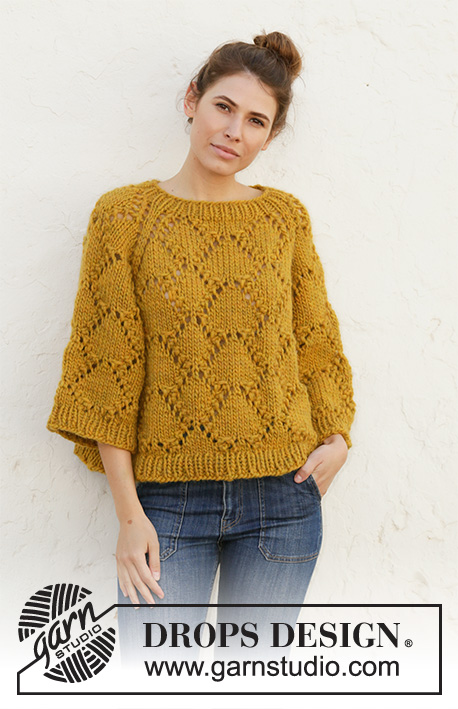 |
||||||||||||||||||
Knitted jumper with raglan with 1 thread DROPS Snow or 1 thread SROPS Wish or 2 threads Air. The piece is worked top down with lace pattern. Sizes S - XXXL.
DROPS 200-5 |
|||||||||||||||||||
|
------------------------------------------------------- EXPLANATIONS FOR THE PATTERN: ------------------------------------------------------- PATTERN: See diagrams A.1 to A.6 (A.4 and A.6 apply to sizes S, M and L). Choose diagram for your size. DECREASE TIP (evenly spaced): To work out how to decrease evenly, count the total number of stitches on the needle (e.g. 58 stitches) and divide by the number of decreases to be made (e.g. 2) = 29. In this example decrease by knitting each 28th and 29th stitch together. INCREASE TIP (evenly spaced): To work out how to increase evenly, count the total number of stitches on the needle (e.g. 118 stitches) and divide by the number of increases to be made (e.g. 24) = 4.9. In this example increase by making 1 yarn over after approx. each 5th stitch. On the next row work the yarn overs twisted to avoid holes. ------------------------------------------------------- START THE PIECE HERE: ------------------------------------------------------- JUMPER - SHORT OVERVIEW OF THE PIECE: The piece is worked in the round with circular needle top down. Sleeves are worked in the round with short circular needle. JUMPER: NECK: Cast on 56-58-60-64-64-68 stitches with circular needle size 8 mm and 1 thread Snow, 1 thread Wish or 2 threads Air. Knit 1 round. Then work rib (knit 1, purl 1) for 4 cm. YOKE: Change to circular needle size 9 mm. Knit 1 round where you decrease 0-2-4-0-0-4 stitches evenly spaced – read DECREASE TIP = 56-56-56-64-64-64 stitches. Now work pattern – choose diagram for your size, as follows: * insert a marker thread here, A.1 over the first 3-3-3-4-4-4 stitches, A.2 over the next 14 stitches, A.3 over the next 4-4-4-5-5-5 stitches (= back/ front piece), insert a marker thread here, A.1 over the next 3-3-3-4-4-4 stitches, A.3 over the next 4-4-4-5-5-5 stitches (= sleeve) *, work from *-* 1 more time on the round. There are now 4 marker threads in the piece. They follow your work onwards and mark the transitions between body and sleeves. Continue this pattern in the round. Increase on each side of the diagrams to raglan (increases are drawn into the diagrams). REMEMBER THE KNITTING TENSION! When you have worked as far as the round with an arrow in the diagrams (see arrow for your size), there are 192-200-216-232-248-256 stitches on the round. The piece measures approx. 29-30-33-35-37-39 cm from the cast-on edge and down mid front. The next round is worked as follows: Work the first 55-57-61-65-69-71 stitches (= back piece), place the next 41-43-47-51-55-57 stitches on a thread (= sleeve), cast on 4-4-6-6-8-8 new stitches on the needle (= in side under sleeve), work the next 55-57-61-65-69-71 stitches (= front piece), place the next 41-43-47-51-55-57 stitches on a thread (= sleeve), cast on 4-4-6-6-8-8 new stitches under sleeve. THE PIECE IS NOW MEASURED FROM HERE! BODY: = 118-122-134-142-154-158 stitches. Insert a marker thread in each side, in the middle of the 4-4-6-6-8-8 new stitches cast on under the sleeves (= 2-2-3-3-4-4 new stitches on each side of the marker thread). Start the round by the marker thread on one side of the piece and work pattern, beginning on the round marked with a star for your size in the diagram(s) as follows: Sizes S, M and L: * Knit 1-2-5 stitches, A.4 over the next 7 stitches, A.5 over the next 42 stitches (= 3 repeats of 14 stitches), A.6 over the next 7 stitches, knit 2-3-6 stitches *, work from *-* 1 more time on the round. Sizes XL, XXL and XXXL: * Knit 0-3-4 stitches, A.5 over the next 70 stitches (= 5 repeats of 14 stitches), knit 1-4-5 stitches *, work from *-* 1 more time on the round. Continue in the round like this until the piece measures approx. 19-20-19-19-19-19 cm – adjust so that you finish after round 5 or 13 in A.5. Knit 1 round where you increase 24-24-26-28-30-32 stitches evenly spaced – read INCREASE TIP = 142-146-160-170-184-190 stitches. Change to circular needle size 8 mm. Work rib (knit 1, purl 1) in the round for 4 cm. Cast off with knit over knit and purl over purl. Make sure that the cast-off edge is not tight. Use a size larger needle if necessary. The jumper measures approx. 56-58-60-62-64-66 cm from the shoulder down. SLEEVE: Place the 41-43-47-51-55-57 stitches from the thread on the one side of the piece back on short circular needle size 9 mm and knit up 1 stitch in each of the 4-4-6-6-8-8 stitches cast on under the sleeve = 45-47-53-57-63-65 stitches. Insert a marker thread in the middle of the 4-4-6-6-8-8 stitches cast on under the sleeve (= 2-2-3-3-4-4 new stitches on each side of the marker thread). Start the round by the marker thread and work pattern, beginning on the round marked with a star for you size in the diagram(s) as follows: Sizes S, M and L: Knit 1-2-5 stitches, A.4 over the next 7 stitches, A.5 over the next 28 stitches (= 2 repeats of 14 stitches), A.6 over the next 7 stitches, knit 2-3-6 stitches. Sizes XL, XXL and XXXL: Knit 0-3-4 stitches, A.5 over the next 56 stitches (= 4 reports of 14 stitches), knit 1-4-5 stitches. Continue in the round like this until the piece measures approx. 19-19-17-15-13-12 cm – adjust so that you finish after round 5 or 13 in A.5. Knit 1 round where you increase 9-9-11-11-13-13 stitches evenly spaced = 54-56-64-68-76-78 stitches. Change to circular needle size 8 mm. Work rib (knit 1, purl 1) in the round for 4 cm. Cast off with knit over knit and purl over purl. Make sure that the cast-off edge is not tight. Use a size larger needle if necessary. The sleeve measures approx. 23-23-21-19-17-16 cm. Work the other sleeve in the same way. |
|||||||||||||||||||
Diagram explanations |
|||||||||||||||||||
|
|||||||||||||||||||
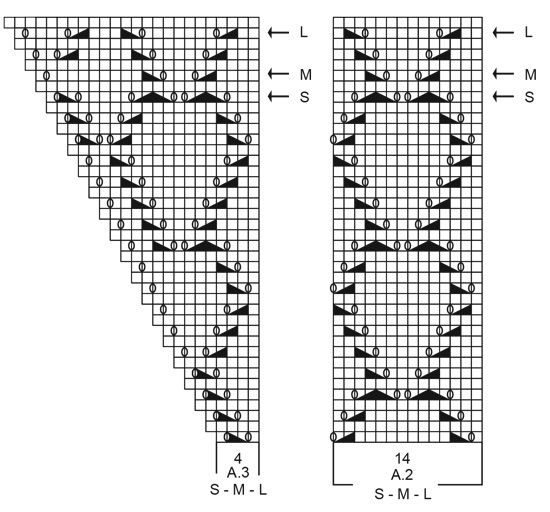 |
|||||||||||||||||||
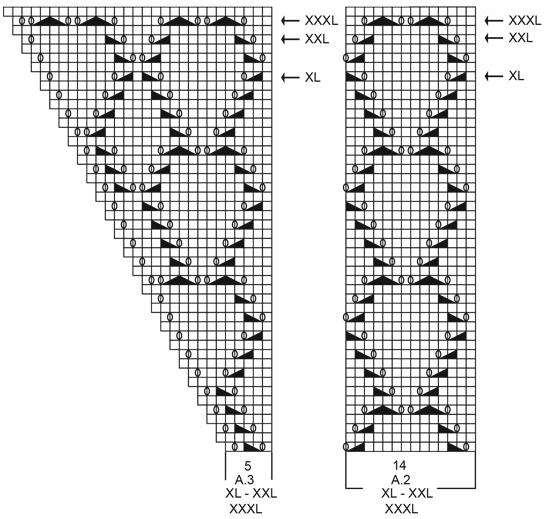 |
|||||||||||||||||||
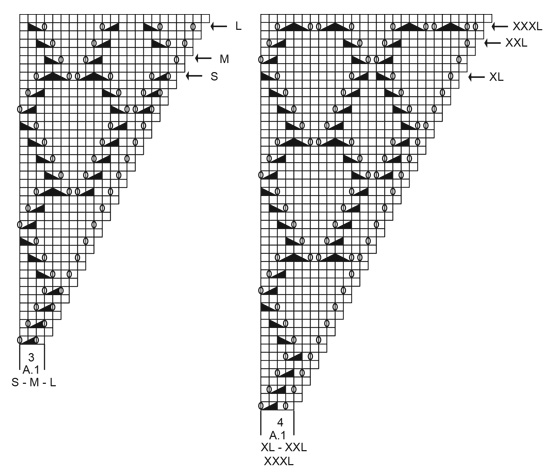 |
|||||||||||||||||||
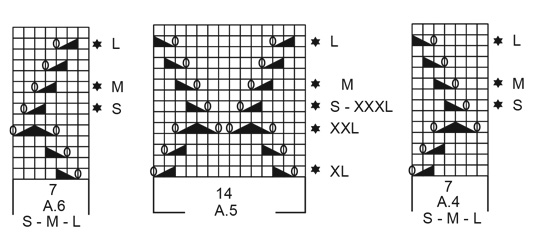 |
|||||||||||||||||||
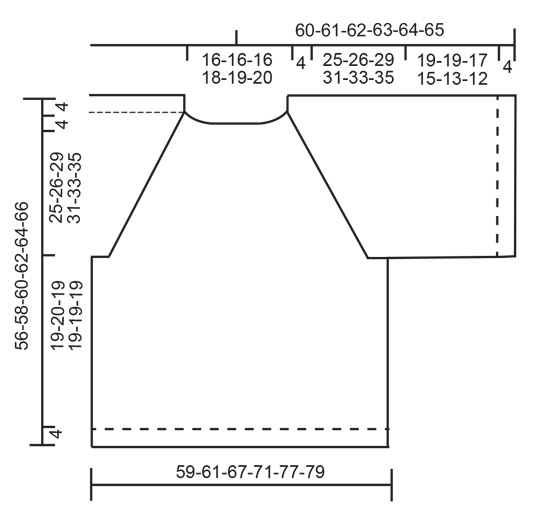 |
|||||||||||||||||||
Have you finished this pattern?Tag your pictures with #dropspattern #summershellssweater or submit them to the #dropsfan gallery. Do you need help with this pattern?You'll find 25 tutorial videos, a Comments/Questions area and more by visiting the pattern on garnstudio.com. © 1982-2025 DROPS Design A/S. We reserve all rights. This document, including all its sub-sections, has copyrights. Read more about what you can do with our patterns at the bottom of each pattern on our site. |
|||||||||||||||||||









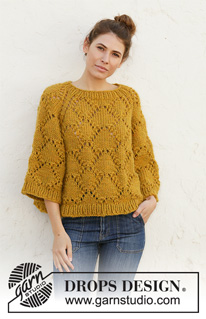
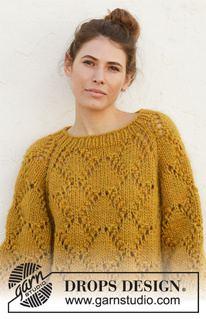





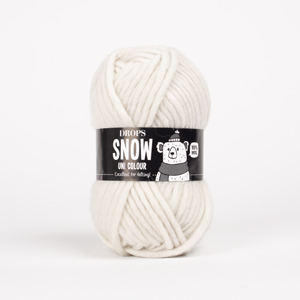
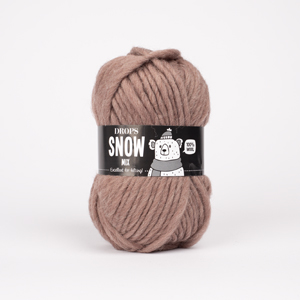



































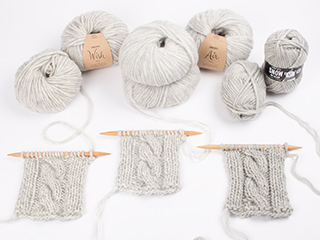



















Post a comment to pattern DROPS 200-5
We would love to hear what you have to say about this pattern!
If you want to leave a question, please make sure you select the correct category in the form below, to speed up the answering process. Required fields are marked *.